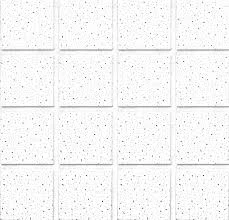- Afrikaans
- Albanian
- Amharic
- Arabic
- Armenian
- Azerbaijani
- Basque
- Belarusian
- Bengali
- Bosnian
- Bulgarian
- Catalan
- Cebuano
- Corsican
- Croatian
- Czech
- Danish
- Dutch
- English
- Esperanto
- Estonian
- French
- German
- Greek
- Hindi
- Indonesian
- irish
- Italian
- Japanese
- Korean
- Lao
- Malay
- Myanmar
- Norwegian
- Norwegian
- Polish
- Portuguese
- Romanian
- Russian
- Serbian
- Spanish
- Swedish
- Thai
- Turkish
- Ukrainian
- Uzbek
- Vietnamese
ພ.ຈ. . 06, 2024 17:04 Back to list
gypsum vs pvc ceiling
Gypsum vs. PVC Ceilings A Comprehensive Comparison
When it comes to choosing the right material for ceiling installations, both gypsum and PVC (polyvinyl chloride) have emerged as popular choices. Each material offers unique advantages and disadvantages, making the decision largely dependent on the specific needs of the space and the desired aesthetic. In this article, we will explore the differences, advantages, and disadvantages of gypsum and PVC ceilings to help you make an informed decision.
Gypsum Ceilings
Gypsum ceilings, often referred to as drywall ceilings, are made from gypsum plaster that is sandwiched between two sheets of thick paper. They are widely used due to their fire-resistant properties and their ability to provide a smooth, seamless finish. Here are some key benefits of gypsum ceilings
1. Aesthetic Appeal Gypsum ceilings can be easily molded into various shapes and designs, allowing for intricate patterns and finishes that enhance the overall aesthetics of a room. They can be painted in any color, providing flexibility in design.
2. Sound Insulation Gypsum has excellent sound-absorbing qualities, making it ideal for settings where noise reduction is a priority, such as offices or home theaters.
3. Fire Resistance Due to their mineral composition, gypsum ceilings have a high degree of fire resistance, offering an added layer of safety in residential and commercial buildings.
However, gypsum ceilings also have some drawbacks. They are susceptible to moisture and water damage, which can lead to sagging or mold growth. This makes them less suitable for high-humidity areas like bathrooms or kitchens unless treated properly.
gypsum vs pvc ceiling

PVC Ceilings
PVC ceilings, on the other hand, are composed of a lightweight synthetic plastic material. They are increasingly popular in modern construction due to their unique properties. Some of the advantages of PVC ceilings include
1. Water Resistance PVC is inherently impervious to water, making it an ideal choice for areas prone to moisture. This property helps to prevent damage from dampness, mold, or mildew, which is a common issue with gypsum ceilings.
2. Ease of Installation PVC ceilings are lightweight and can be installed quickly and easily, often requiring less labor compared to gypsum ceilings. They come in a range of styles and colors, including wood and metallic finishes, allowing for versatile design options.
3. Low Maintenance One of the significant benefits of PVC ceilings is their low maintenance requirements. They are easy to clean, do not require painting, and are highly durable, making them a long-term solution.
Nevertheless, PVC ceilings may lack the aesthetic appeal of gypsum ceilings, particularly in premium applications. They might not provide the same level of sound insulation and can emit harmful chemicals if not properly manufactured.
Conclusion
In summary, both gypsum and PVC ceilings have their respective advantages and disadvantages. Gypsum ceilings offer aesthetic versatility, sound insulation, and fire resistance, making them suitable for many applications. However, their susceptibility to moisture might limit their use in specific environments. On the other hand, PVC ceilings excel in water resistance, ease of installation, and low maintenance but may compromise on aesthetic charm and soundproofing capabilities. Ultimately, the choice between gypsum and PVC ceilings will depend on your specific requirements, budget, and design preferences.
-
Transform Interiors with PVC Gypsum Ceiling: A Stylish, Durable, and Moisture-Resistant SolutionNewsMay.19,2025
-
The Smart Interior Upgrade: Discover the Durability and Versatility of Gypsum Ceiling Access Panel SolutionsNewsMay.19,2025
-
The Smart Choice for Interior Design: Discover the Value of PVC Gypsum Ceiling SolutionsNewsMay.19,2025
-
Mineral Fiber Ceiling Tiles: The Smart Blend of Performance and AestheticsNewsMay.19,2025
-
Mineral Fiber Ceiling Tiles: The Superior Choice Over Gypsum for Sound and Fire SafetyNewsMay.19,2025
-
Mineral Fiber Ceiling Tiles: Eco-Friendly Strength and Style for Every CeilingNewsMay.19,2025







